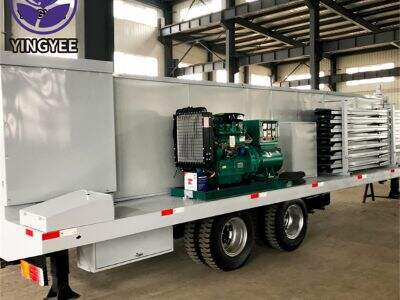Basics of Drive Systems in Roll Forming Lines
Roll forming is equipment, which help in creating shapes of metal through a series of rollers. These rolls then fold the sheet to create appropriate forms including metal studs, roof panels, and window casings. Power Systems — the machinery needs a drive system to get it moving and shaping the metal.
The drive system is what powers the rollers to form the metal in a roll forming line. metal roll forming machine can be equipped with several different types of drive systems, each with its respective pros and cons.
Twin-Drive Tip Dies Roll Forming Machinery
Top Three Types of Drive System Configurations in Roll Forming Lines:1. A mechanical drive systems involves gears, chains and belts for transferring power from the motor to the rollers. With the hydraulic drive system, fluid power is used to drive the rollers whereas with the electric drive system, an electric motor powers up the machinery.
And of course, with different drive systems combined with. Mechanical drives are low priced and easy to apply but less power efficient, noisy & require regular maintenance. Hydraulic drive systems provide greater power and efficiency compared to electric drives, but are more complex and expensive. Electric motors are clean and quiet, but need controlled by an accurate map and extra cost at the point of sale.
Choosing the Right Drive System: How It Factors in Roll Forming Line Performance
In the selection of a drive system that will be used in a roll forming line, the unique requirements of the production process are a key factor. The drive system configuration most suited for the job will depend on numerous factors including the metal, speed and precision of machinery needed and floor space.
Here are 3 ways manufacturers can optimize performance and increase productivity by using the right drive system in their steel roll forming machine. Selecting the Right Drive System to Optimize Roll Form Speed and Accuracy for Improved Part Quality and Less Scrap.
Taking a Look at How the Drive System Configuration in Roll Forming is Significant
An essential part of a roll forming line, the drive system that can either positively and negatively impact productivity and thus the overall effectiveness of the machinery. An improperly selected or malfunctioning drive system that can cause production downtime, quality concerns and operational oversights.
Simply by understanding the drive system configurations available, and judiciously selecting a configuration appropriate to their needs, manufacturers stand a chance at achieving smooth and efficient roll forming operations. It is also important to maintain and monitor the drive system in order to avoid any breakdowns and ensure continuous operation.
Factors to Consider
So what are the main issues that need to be considered when selecting a drive system for a roll forming line? The material used for metal and the speed and precision of machine also play a vital role in making this choice. Additionally, the drive system configuration may be dependent upon the available space in the factory and budget for a project.
Manufacturers must also consider how simple it is to both maintain and repair the drive system or components as well as whether spare parts or technical support are going to always be readily available. Through diligent consideration of these factors and by selecting the drive system that is right for their unique requirements, manufacturers can ensure superior performance from their roller shutter roll forming machine operations and excel in metal forming operations.

 EN
EN
 AR
AR BG
BG DA
DA NL
NL FR
FR DE
DE EL
EL IT
IT KO
KO PT
PT RO
RO RU
RU ES
ES TL
TL ID
ID SR
SR SL
SL UK
UK VI
VI GL
GL HU
HU TR
TR FA
FA MS
MS GA
GA CY
CY MK
MK AZ
AZ KA
KA BN
BN BS
BS LA
LA MN
MN NE
NE MY
MY KK
KK UZ
UZ KY
KY